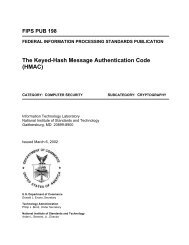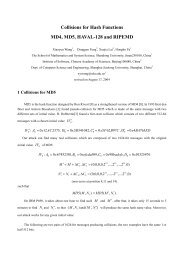sonet 101
sonet 101
sonet 101
You also want an ePaper? Increase the reach of your titles
YUMPU automatically turns print PDFs into web optimized ePapers that Google loves.
What is SONET?<br />
VT payloads and VT path overhead comprise the virtual tributary’s synchronous<br />
payload envelope and are similar to the STS’s payload. Within an STS-1 frame,<br />
each VT occupies a number of columns as shown in Figure 1-7. Within the<br />
STS-1, many VT groups can be mixed together to form an STS-1 payload.<br />
VT Group<br />
To accommodate different mixes of VTs in an efficient manner, the STS-1 SPE is<br />
divided into seven groups. A conceptual view of the VT groups appears in Figure<br />
1-8. (The VT groups are actually interleaved.) A VT group may contain one<br />
VT-6, three VT-2s, or four VT-1.5s. A VT group must contain only one size of<br />
VTs, but different types of VT groups may be mixed into one STS-1 SPE.<br />
14<br />
DS-1 Visibility<br />
Figure 1-7 shows the SONET STS-1 frame format. Individual DS-1s are visible<br />
(neatly stacked together for easy identification). Because the multiplexing is<br />
synchronous, the low-speed tributaries (input signals) can be multiplexed<br />
together but are still visible at higher rates. An individual VT containing a DS-1<br />
can be extracted without demultiplexing the entire STS-1. This improved<br />
accessibility improves switching and grooming at VT or STS levels.<br />
In an asynchronous DS-3 frame, the DS-1s have gone through two levels of<br />
multiplexing (DS-1 to DS-2; DS-2 to DS-3) which include the addition of stuffing<br />
and framing bits. The DS-1 signals are mixed somewhere in the information bit<br />
fields and cannot be easily identified without completely demultiplexing the<br />
entire frame.<br />
Different synchronizing techniques are used for multiplexing. In existing asynchronous<br />
systems, the timing for each fiber optic transmission system (FOTS) terminal<br />
is not locked onto a common clock. Therefore, large frequency variations<br />
can occur. “Bit stuffing” is a technique used to synchronize the various lowspeed<br />
signals to a common rate before multiplexing.<br />
Note: A more detailed explanation of synchronization is provided in Section 2.






